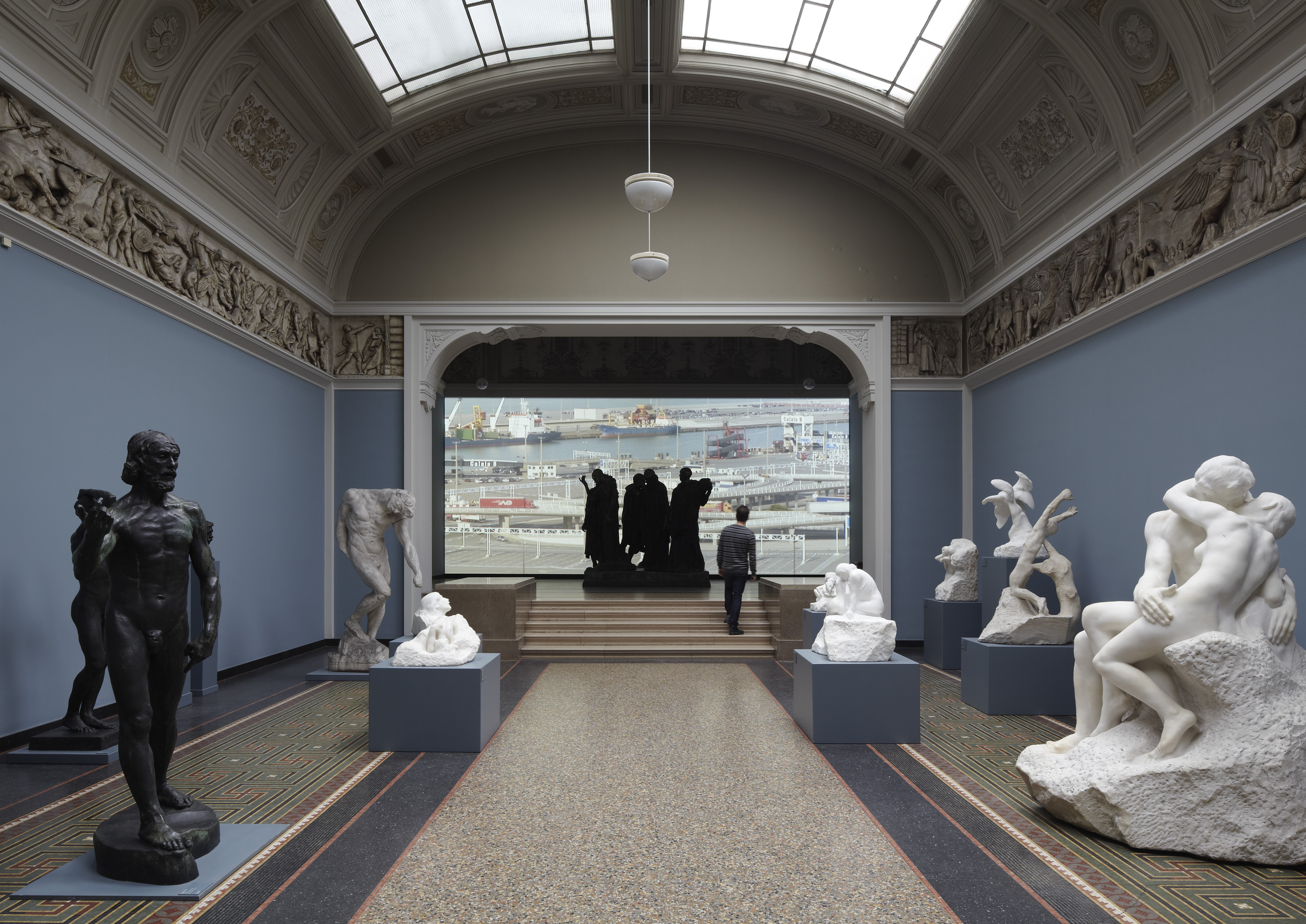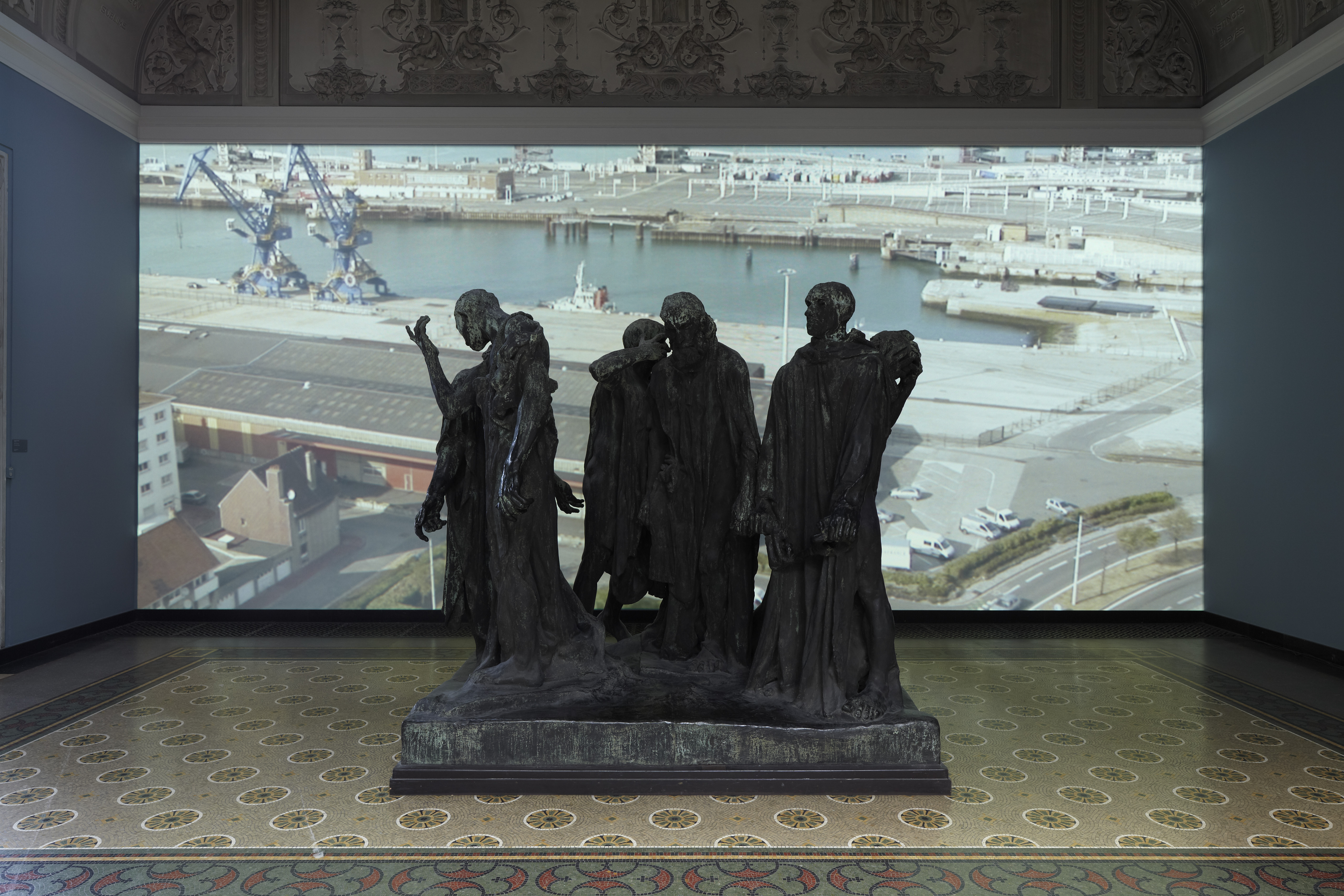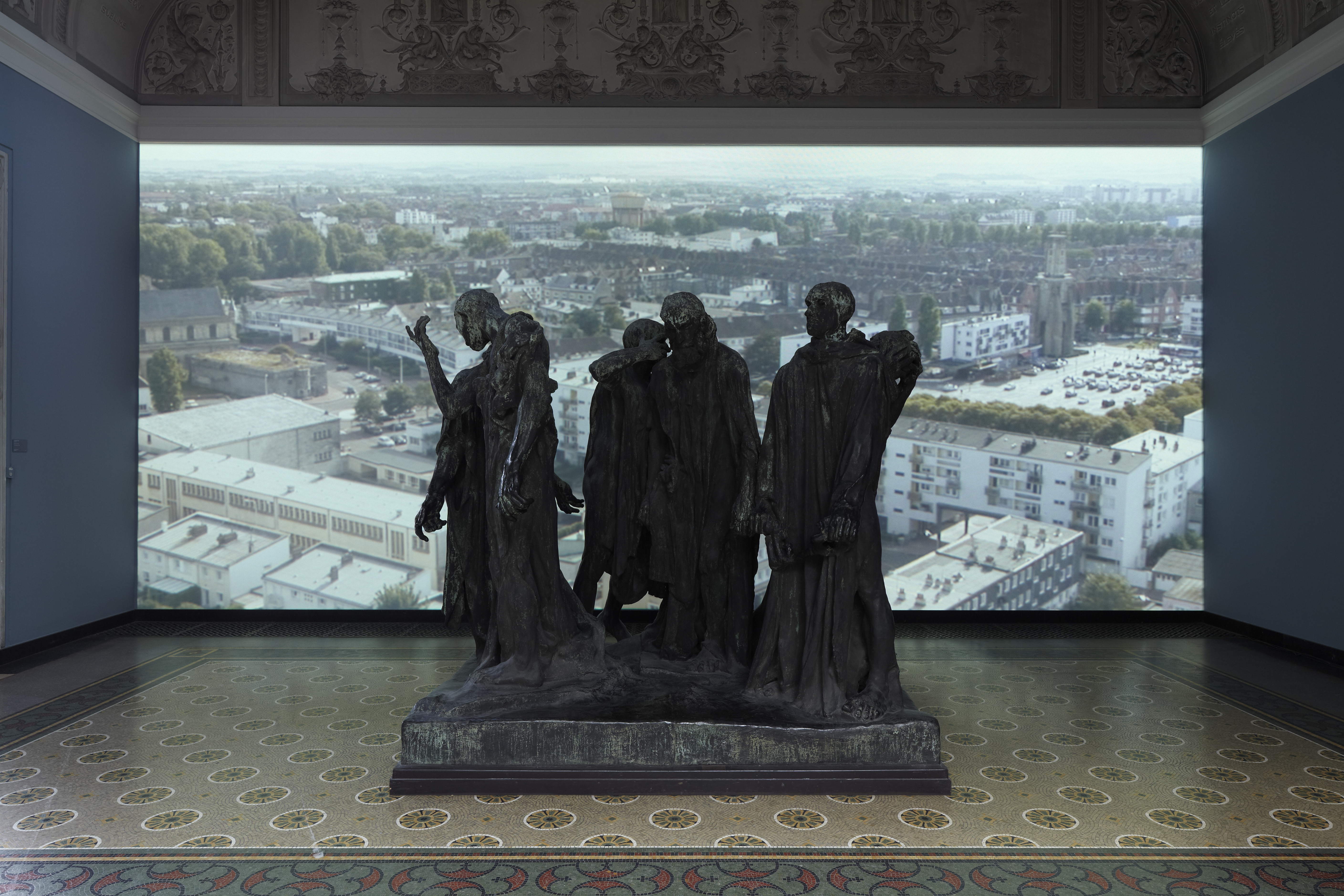Calais is a video and sound work created for Auguste Rodin’s dramatic sculptural group The Burghers of Calais (the Ny Carlsberg Glyptotek, Copenhagen). Rodin’s work is an interpretation of the legend about the 6 leading citizens of Calais who in 1347 offered to sacrifice themselves in order to save their fellow citizens during the English siege of the city. Another version of the story relates that they were not leading citizens but convicted criminals who were due to be executed anyway. Victims or heroes? Whatever the case, the sculpture does not show them as ideal heroes, but as 6 emaciated men terrified by the fate awaiting them. In her work Eva Koch has chosen to bring Calais back to this exiled group of citizens and has filmed the city as it appears today, a city marked by unemployment and the increasing number of illegal immigrants seeking to pass through the Eurotunnel. The video shows everyday life in the city, but devotes especial attention to the traffic, the cars, the train and the ferry that link Calais with the rest of the world.
With its focus on humankind’s ceaseless movement the work reaches back to the long series of Eva Koch’s earlier works that also focus on modern man as a nomadic being who is always en route, both physically and mentally. For pleasure – or from necessity, as is the case for a particularly vulnerable group of travellers to and from Calais.
Rodin’s sculpture was controversial and broke new ground in his day, and with her installation Eva Koch has made a distinguished contribution to the large group of works by visual artists that pioneer new ways rather than sticking to the beaten track. Her installation Calais demonstrates that light and sound are materials on a par with bronze, plaster and marble, and that even though the forms of artistic expression necessarily and fortunately change over time, it is the same existential questions that art continues to keep open.




